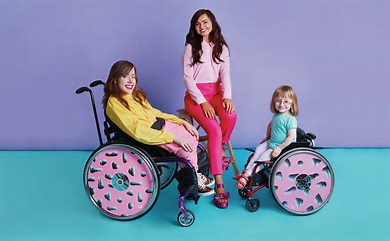My fashion sense leaves much to be desired, but a few times a year I visit the Tommy Hilfiger outlet.
When I was in high school in the early 2000s, I liked Hilfiger’s oversized shorts because they covered my knees. As an adult, I appreciate Hilfiger’s refined style and soft fabrics, though now I can choose between a handful of brands that cater to my kind—something I never thought I’d see in my lifetime. I’ve been in a wheelchair for 26 years. My daily routine involves choosing a T-shirt from the top of my drawer; if I have a special occasion, I’ll grab a button-up shirt from my closet. This is also how I choose my pants and shorts. The result is quite underwhelming—not just to me, but to those making assumptions about me on video calls or in real life.
Many of us aren’t even aware of it, but the proximity to clothes in our own homes, as well as the strenuousness of putting those clothes on, can profoundly impact who we are. Part of my slovenliness can be credited to my quasi-adoption of the disheveled-writer persona. I also lack fine motor skills, making it difficult to not only put on clothes but to find attire. Like many writers and creatives, I have a deep appreciation for everything artistic, from the colorful brushstrokes in a painting to the graceful fluidity of dance. So it’s ironic that I haven’t been keen on my appearance, though I’m accustomed to being perceived in a particular way—much like how a model is, fairly or unfairly, judged.

